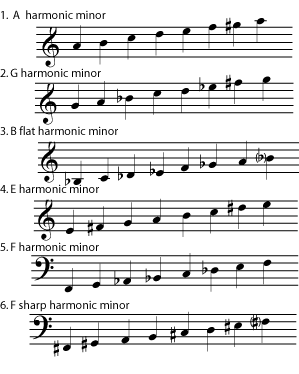

This example to the contrary from Bach's D minor invention is one I easily remember. That textbook definition doesn't seem to hold water.

The standard textbook description of the melodic minor scale is the natural minor scale descending and natural minor with raised ^6 and ^7 tone when ascending. I've looked at Bach, Mozart, Clementi, and Fenaroli shared an example from Rameau which on the whole is the same as Fenaroli) but I don't yet have a historic source for the three types of minor scales concept older than Walter Piston.

While this particular point is interesting it doesn't answer my question. It seems clear from these examples and those I gave earlier from Bach and Mozart that the treatment of the descending upper tetrachord of the minor scale depends greatly on whether the tones are functioning as essential harmony tones or figurative decoration. But of those that are in minor keys when the upper tetra chord of a minor scale is played descending in a figure subdividing the beat the raised ^6 & ^7 are frequently employed. After than over 100 pages of short performance pieces. The rest of the book goes on to present the scales for daily practice drills in all keys. The next oldest example I know is Clementi's Art of Playing on the Piano Forte.Īs in the case with Fenaroli, Clementi presents only one minor scale and it isn't given a special name. Note that the middle bass clef is the actual bass, the lower bass clef gives the theoretical root of each chord. It is simply the harmonization rule for the minor mode. The earliest example I know of is Fenaroli's rule of the octave in Regole musicali per i principianti di cembalo.įrom the English translation I have seen, Fenaroli didn't apply a special name to this minor scale and he did not distinguish three different minor scales. I thought I should add notes about two historic examples that seem to be melodic minor, but are neither named that in the sources nor presented as one of three different minor scales. One system supplants another and obscures the methods and teaching of the past. which supplanted the earlier figured bass system for analysis and teaching. I think of this sort of like the origin of roman numeral analysis which I have seen attributed to Georg Volger and Gottfried Weber. Surely this idea came earlier that Walter Piston. I want to know - to whatever extent is possible - the origin of the three minor scales concept. So, I'm not looking for an origin to minor key harmony - I already know that from figured bass and the rule of the octave - and I'm not arguing the question of one versus three minor scales - better sources like Kostka explain clearly there is one minor scale. My Kostka Tonal Harmony (2nd ed.) does not and explains that in reality there is only one minor scale where the ^6 & ^7 are variable. My Piston Harmony textbook (1st ed.) presents such a diagram. I am specifically asking about pedagogical sources that present these three forms of minor scales, like this. I edited my question title to better reflect what I am asking.


 0 kommentar(er)
0 kommentar(er)
